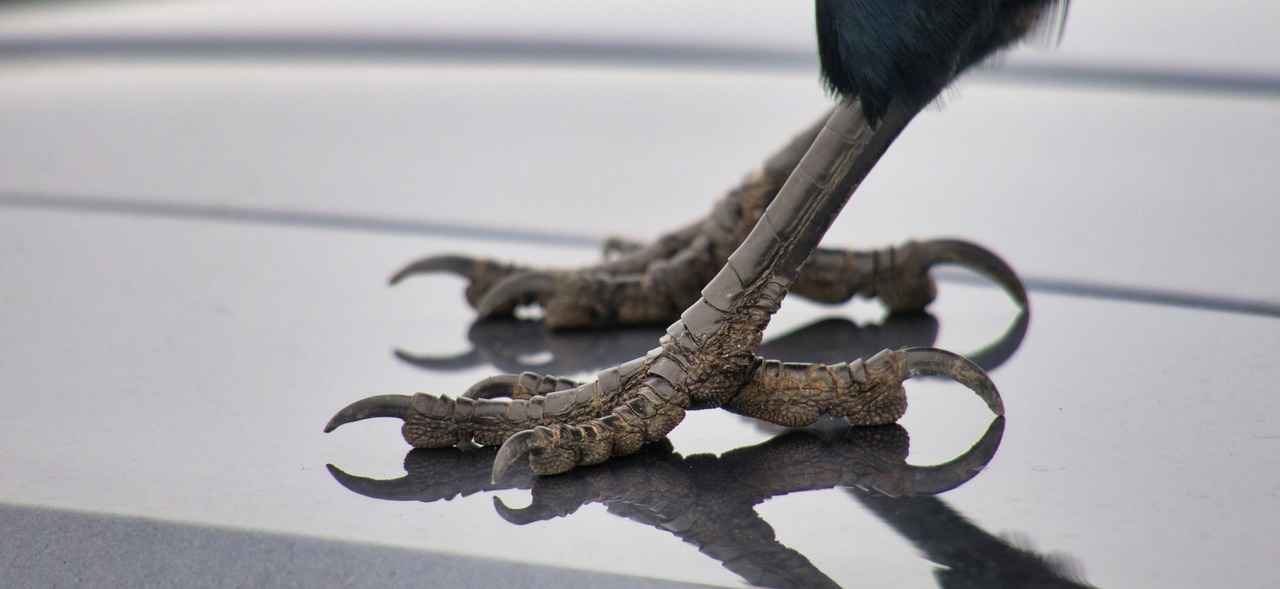This article delves into the extraordinary anti-inflammatory properties of Cat’s Claw, a potent herbal remedy that has garnered attention for its diverse health benefits and traditional applications across various cultures.
What is Cat’s Claw?
Cat’s Claw, scientifically recognized as Uncaria tomentosa, is a climbing vine indigenous to the Amazon rainforest. It has been revered for centuries due to its remarkable medicinal properties and its significant role in the practices of traditional medicine.
Health Benefits of Cat’s Claw
This herbal remedy is celebrated for its extensive health benefits, which include:
- Reducing inflammation
- Boosting the immune system
- Supporting joint health
These attributes have made Cat’s Claw a favored choice among those seeking natural alternatives to conventional treatments.
Anti-Inflammatory Properties
The remarkable anti-inflammatory effects of Cat’s Claw are largely due to its unique phytochemical compounds. These compounds aid in modulating the body’s inflammatory response, offering relief for ailments such as arthritis and chronic pain conditions.
Scientific Studies on Inflammation
Numerous research studies have indicated that extracts of Cat’s Claw can significantly lower markers of inflammation in the body. This highlights its potential as a natural substitute for traditional anti-inflammatory medications.
Traditional Uses in Medicine
Historically, indigenous cultures have harnessed Cat’s Claw for its anti-inflammatory benefits, employing it to treat various conditions such as arthritis and digestive issues. This showcases its enduring legacy in the realm of natural healing.
How to Use Cat’s Claw
Cat’s Claw can be consumed in several forms, including:
- Capsules
- Teas
- Tinctures
This variety allows individuals to select the method that best aligns with their lifestyle and health requirements.
Potential Side Effects and Precautions
While generally regarded as safe, some individuals may experience side effects such as digestive upset or allergic reactions. Therefore, it is crucial to consult a healthcare provider before incorporating it into your regimen.
Interactions with Medications
Cat’s Claw may interact with certain medications, particularly those influencing blood pressure or anticoagulants. Caution and professional advice are essential when adding this herb to your health routine.
Who Should Avoid Cat’s Claw?
Certain groups, including pregnant or breastfeeding women and individuals with autoimmune diseases, should refrain from using Cat’s Claw unless directed by a healthcare professional due to potential risks.
Conclusion: Embracing Cat’s Claw for Health
Incorporating Cat’s Claw into your wellness routine can provide significant anti-inflammatory benefits. However, it is paramount to approach its use thoughtfully and informed, ensuring it aligns with your health goals and needs.

What is Cat’s Claw?
Cat’s Claw, scientifically known as Uncaria tomentosa, is a remarkable climbing vine that thrives in the lush environment of the Amazon rainforest. This plant has garnered significant attention for its impressive medicinal properties and its rich history in traditional medicine practices among indigenous cultures. Renowned for its ability to promote health and wellness, Cat’s Claw has been utilized for centuries by native tribes for a variety of ailments.
The vine features long, curved thorns that resemble a cat’s claw, hence its name. The parts of the plant that are commonly used for medicinal purposes include the inner bark and the root. These components are packed with active compounds such as alkaloids, flavonoids, and glycosides, which contribute to its health-promoting effects.
One of the most notable aspects of Cat’s Claw is its anti-inflammatory properties. The compounds found within the plant have been shown to help reduce inflammation in the body, making it a popular choice for those suffering from conditions like arthritis and chronic pain. Additionally, Cat’s Claw is believed to support the immune system, providing a natural boost to the body’s defenses against illness.
In various cultures, Cat’s Claw has been traditionally used to treat ailments ranging from digestive issues to infections. Its versatility in herbal medicine showcases its importance as a natural remedy. As research continues to unveil its potential benefits, Cat’s Claw is increasingly recognized as a valuable addition to holistic health practices.
In conclusion, Cat’s Claw is more than just a climbing vine; it is a powerful herbal remedy with a long-standing history of use in traditional medicine. Whether you are looking to reduce inflammation or enhance your immune health, Cat’s Claw offers a natural approach to wellness that is worth exploring.

Health Benefits of Cat’s Claw
Cat’s Claw, scientifically known as Uncaria tomentosa, is a climbing vine indigenous to the Amazon rainforest. This remarkable plant has been utilized for centuries in traditional medicine, particularly by indigenous cultures, for its extensive health benefits. Its popularity has surged in recent years as more individuals seek natural remedies for various health issues.
One of the most significant advantages of Cat’s Claw is its potent anti-inflammatory properties. This herbal remedy contains unique compounds, such as alkaloids and glycosides, which help regulate the body’s inflammatory response. As a result, it has become a favored option for those suffering from conditions like arthritis and chronic pain. By alleviating inflammation, Cat’s Claw not only provides relief but also enhances overall joint health.
In addition to its anti-inflammatory effects, Cat’s Claw is known to boost the immune system. Research suggests that it may stimulate the production of white blood cells, which play a crucial role in defending the body against infections and diseases. This immune-boosting effect makes Cat’s Claw a valuable addition to any health regimen, especially during cold and flu seasons.
Furthermore, Cat’s Claw has been linked to improved digestive health. Its natural compounds may help soothe the gastrointestinal tract, potentially alleviating conditions such as irritable bowel syndrome (IBS) and promoting overall gut health. This makes it a versatile remedy for those seeking holistic approaches to their health.
In conclusion, Cat’s Claw stands out as a powerful herbal remedy with numerous health benefits, including its ability to reduce inflammation, enhance immune function, and support digestive health. As always, it is essential to consult with a healthcare professional before incorporating new supplements into your routine to ensure they align with your individual health needs.
Anti-Inflammatory Properties
Exploring the Anti-Inflammatory Properties of Cat’s Claw
Cat’s Claw, or Uncaria tomentosa, is more than just a climbing vine found in the lush Amazon rainforest; it is a herbal powerhouse revered for its extensive health benefits. One of the most notable aspects of Cat’s Claw is its , which have garnered attention in both traditional and modern medicine.
Understanding Cat’s Claw’s Mechanism
The anti-inflammatory effects of Cat’s Claw are primarily due to its unique compounds, including alkaloids and glycosides. These compounds work synergistically to modulate the body’s inflammatory response, effectively reducing inflammation at the cellular level. This mechanism is particularly beneficial for individuals suffering from chronic conditions such as arthritis and chronic pain.
Scientific Backing
Numerous studies have highlighted the efficacy of Cat’s Claw in reducing inflammation. For instance, research published in reputable journals has shown that extracts from this herb can significantly lower levels of inflammatory markers, providing a natural alternative to conventional anti-inflammatory medications.
Historical Context and Traditional Uses
Indigenous cultures have long recognized the benefits of Cat’s Claw, using it to treat various ailments, including joint pain and digestive issues. This historical context not only underscores its effectiveness but also reflects a rich tradition of natural healing practices that continue to inform modern herbal medicine.
Practical Applications
- Cat’s Claw can be consumed in various forms such as capsules, teas, and tinctures.
- It is advisable to consult a healthcare provider to determine the best form and dosage for individual health needs.
Conclusion
In summary, the anti-inflammatory properties of Cat’s Claw make it a valuable addition to a wellness routine. However, it is essential to approach its use with care, ensuring it aligns with individual health goals and is used under professional guidance when necessary.
Scientific Studies on Inflammation
Recent scientific research has illuminated the impressive anti-inflammatory properties of Cat’s Claw, a herbal remedy derived from the Uncaria tomentosa vine native to the Amazon rainforest. This powerful plant has been traditionally used for various ailments, but modern studies are now validating its effectiveness in managing inflammation.
One notable study published in the Journal of Ethnopharmacology demonstrated that extracts of Cat’s Claw significantly reduced levels of inflammatory markers such as C-reactive protein (CRP) and interleukin-6 (IL-6). These markers are crucial indicators of inflammation in the body, often elevated in individuals suffering from chronic inflammatory conditions.
Moreover, another research effort highlighted the bioactive compounds found in Cat’s Claw, particularly pentacyclic oxindole alkaloids. These compounds are believed to play a critical role in modulating the immune response, thereby helping to alleviate symptoms associated with inflammatory diseases like arthritis and fibromyalgia.
In addition to the quantitative findings, qualitative studies have also shed light on the experiences of individuals who have incorporated Cat’s Claw into their health routines. Participants reported a noticeable decrease in pain and swelling, reinforcing the herb’s potential as a natural alternative to conventional anti-inflammatory medications.
Overall, the growing body of evidence surrounding Cat’s Claw suggests that it may serve as a valuable addition to the arsenal of natural remedies for managing inflammation. However, it is essential for individuals to consult healthcare professionals before starting any new supplement regimen, especially if they are currently taking other medications.
As research continues to evolve, Cat’s Claw stands out as a promising option for those seeking to enhance their health through natural means.
Traditional Uses in Medicine
Throughout history, Cat’s Claw, or Uncaria tomentosa, has been revered in various indigenous cultures, particularly in the Amazon rainforest, for its remarkable medicinal properties. This climbing vine has been utilized for centuries, primarily for its potent anti-inflammatory effects, which have made it a cornerstone in traditional healing practices.
Indigenous tribes have relied on Cat’s Claw to treat a variety of ailments, such as arthritis, digestive disorders, and even infections. The bark and roots of the plant are often brewed into teas or prepared as tinctures, showcasing the versatility of this natural remedy. The traditional knowledge surrounding Cat’s Claw emphasizes its ability to modulate the immune system and alleviate inflammation, providing a holistic approach to health.
In addition to its use for joint pain, Cat’s Claw has been employed to address gastrointestinal issues. Many practitioners of traditional medicine believe that it can soothe the digestive tract, making it beneficial for conditions like ulcerative colitis and irritable bowel syndrome. This highlights the plant’s multifaceted role in promoting overall well-being.
Modern scientific research has begun to validate some of these traditional uses, revealing that Cat’s Claw contains unique compounds, such as alkaloids and glycosides, which contribute to its anti-inflammatory properties. Studies have shown that these compounds can help reduce the levels of inflammatory markers in the body, further supporting its historical applications.
In conclusion, the historical significance of Cat’s Claw in indigenous medicine underscores its importance as a natural remedy. As we continue to explore its benefits through scientific research, we can appreciate the wisdom of traditional practices and their contributions to modern health.
How to Use Cat’s Claw
Cat’s Claw is a versatile herbal remedy that can be consumed in a variety of forms, making it accessible for different preferences and lifestyles. Here, we will explore the most common methods of consumption, detailing their benefits and how to incorporate them into your daily routine.
- Capsules: One of the most popular forms of Cat’s Claw, capsules offer a convenient way to consume the herb without the need for preparation. They are easy to take and can be found in various dosages. It’s important to follow the recommended dosage on the label or consult with a healthcare professional.
- Teas: Brewing Cat’s Claw tea is a traditional method that allows you to enjoy its benefits in a soothing beverage. To prepare, steep dried Cat’s Claw bark in hot water for 10-15 minutes. This method not only provides the medicinal properties but also offers a calming ritual that can enhance your wellness routine.
- Tinctures: Tinctures are concentrated liquid extracts of Cat’s Claw, typically made by soaking the herb in alcohol or vinegar. They are potent and can be added to water or taken directly. Tinctures are a great option for those who prefer a quick and effective way to consume herbal remedies.
- Powder: Cat’s Claw powder can be added to smoothies, soups, or other foods, allowing for a flexible way to incorporate it into your diet. This form is especially beneficial for those who enjoy cooking and want to enhance the nutritional profile of their meals.
When choosing the best method for incorporating Cat’s Claw into your health regimen, consider your personal preferences, lifestyle, and any specific health needs. Always consult with a healthcare provider before starting any new supplement to ensure it aligns with your overall health goals.
In summary, whether you opt for capsules, teas, tinctures, or powder, Cat’s Claw offers various ways to harness its remarkable health benefits.

Potential Side Effects and Precautions
While Cat’s Claw is widely recognized for its health benefits, particularly its anti-inflammatory properties, it is important to be aware of potential side effects that may affect some individuals. Although many users tolerate it well, a minority may encounter digestive upset, including symptoms such as nausea, diarrhea, or stomach cramps. These reactions can vary in intensity from mild discomfort to more severe gastrointestinal issues.
In addition to digestive concerns, allergic reactions may occur in sensitive individuals. Symptoms can include skin rashes, itching, or swelling, particularly if one has a pre-existing allergy to plants in the Rubiaceae family. Therefore, it is essential for anyone considering the use of Cat’s Claw to consult with a healthcare provider prior to starting treatment, especially if they have known allergies or sensitivities.
Furthermore, Cat’s Claw can interact with certain medications, including those that affect blood pressure or act as anticoagulants. These interactions can lead to either diminished effects of the medications or increased risk of adverse effects. It is crucial to discuss any current medications with a healthcare professional to ensure safe usage.
Specific populations, such as pregnant or breastfeeding women and individuals with autoimmune diseases, should exercise caution or avoid using Cat’s Claw altogether unless under direct supervision of a healthcare provider. This is due to the potential for Cat’s Claw to stimulate the immune system, which may not be advisable for everyone.
In summary, while Cat’s Claw offers various health benefits, it is vital to approach its use with caution. Consulting a healthcare provider can help mitigate risks and ensure that its use aligns with individual health needs and circumstances.
Interactions with Medications
When considering the incorporation of Cat’s Claw into your health regimen, it is vital to understand its potential interactions with various medications. This climbing vine, known scientifically as Uncaria tomentosa, is celebrated for its numerous health benefits, particularly its anti-inflammatory properties. However, its interaction with certain medications can pose risks that should not be overlooked.
Blood Pressure Medications
Cat’s Claw may affect blood pressure levels, which can be problematic for individuals taking antihypertensive medications. The herb has the potential to lower blood pressure, leading to an additive effect when combined with prescribed treatments. Therefore, those on blood pressure medications should consult with a healthcare provider before adding Cat’s Claw to their regimen.
Anticoagulants and Blood Thinners
Another area of concern involves anticoagulant medications. Cat’s Claw may enhance the effects of these drugs, increasing the risk of bleeding. This interaction necessitates careful monitoring and professional advice to avoid complications, especially for individuals with pre-existing bleeding disorders or those undergoing surgery.
Other Potential Interactions
Additionally, Cat’s Claw may interact with medications metabolized by the liver, potentially altering their effectiveness. It is essential for individuals taking multiple medications to discuss their use of Cat’s Claw with a healthcare professional to ensure safe and effective treatment.
Conclusion
In summary, while Cat’s Claw offers remarkable health benefits, its interactions with certain medications, particularly those affecting blood pressure and anticoagulants, require caution. Always seek guidance from a healthcare professional to tailor your health regimen safely and effectively.
Who Should Avoid Cat’s Claw?
While Cat’s Claw (Uncaria tomentosa) is lauded for its numerous health benefits, it is crucial to recognize that certain populations should exercise caution or avoid its use altogether. This precaution is primarily due to potential risks associated with its consumption.
- Pregnant Women: Expectant mothers should refrain from using Cat’s Claw, as it may pose risks to fetal development. Some studies suggest that compounds in Cat’s Claw can influence hormonal levels, which might lead to complications during pregnancy.
- Breastfeeding Mothers: Similar to pregnant women, those who are nursing should avoid Cat’s Claw unless specifically advised by a healthcare professional. The effects of the herb on breast milk and nursing infants are not well-studied, making it a potential risk.
- Individuals with Autoimmune Diseases: People suffering from autoimmune conditions, such as lupus or multiple sclerosis, should also avoid Cat’s Claw. The herb may stimulate the immune system, potentially exacerbating these conditions and leading to adverse effects.
- Those on Certain Medications: If you are taking medications, especially anticoagulants or blood pressure drugs, consulting with a healthcare provider is essential before incorporating Cat’s Claw into your regimen. The herb may interact negatively with these medications, leading to unforeseen complications.
In summary, while Cat’s Claw can offer numerous health benefits, it is vital for specific populations to approach its use with caution. Consulting a healthcare professional can help assess individual risks and ensure safe usage of this powerful herb.

Conclusion: Embracing Cat’s Claw for Health
Incorporating Cat’s Claw into your wellness routine can offer significant anti-inflammatory benefits, but it is essential to approach its use thoughtfully and informed. Understanding how this powerful herbal remedy aligns with your specific health goals and needs is crucial for maximizing its potential benefits.
Cat’s Claw, or Uncaria tomentosa, is a climbing vine that thrives in the Amazon rainforest. Its historical use in traditional medicine highlights its importance as a natural remedy for various ailments. By harnessing its unique compounds, individuals can experience relief from inflammation, which is linked to numerous chronic conditions.
When considering the integration of Cat’s Claw into your health regimen, it is advisable to:
- Consult with a healthcare professional to ensure it is appropriate for your personal health circumstances.
- Start with a low dosage to gauge your body’s response before gradually increasing it.
- Monitor any side effects or interactions with medications you may be taking.
Research supports the effectiveness of Cat’s Claw in reducing inflammation markers, making it a compelling alternative for those seeking natural solutions. However, it is vital to acknowledge that while many individuals benefit from its use, some may experience adverse reactions, particularly those with specific health conditions or who are pregnant or breastfeeding.
In conclusion, Cat’s Claw can be a valuable addition to your wellness routine, providing significant anti-inflammatory support. By approaching its use with care and consideration, you can better align it with your health objectives and enhance your overall well-being.














